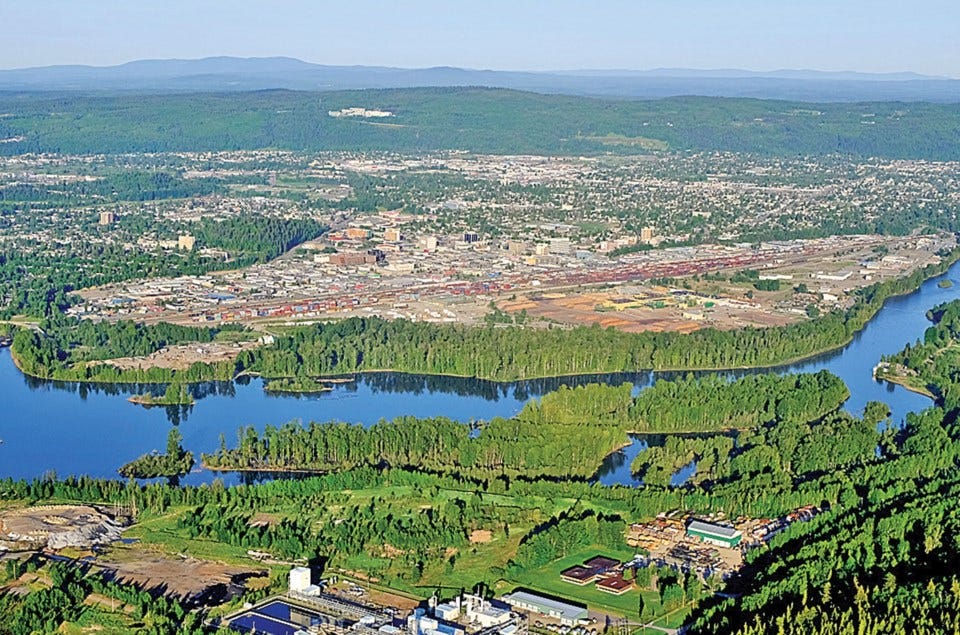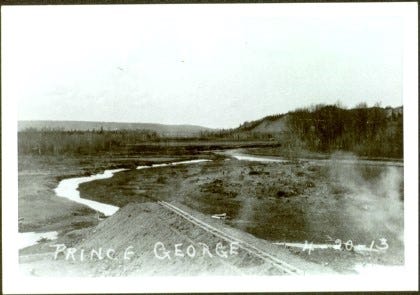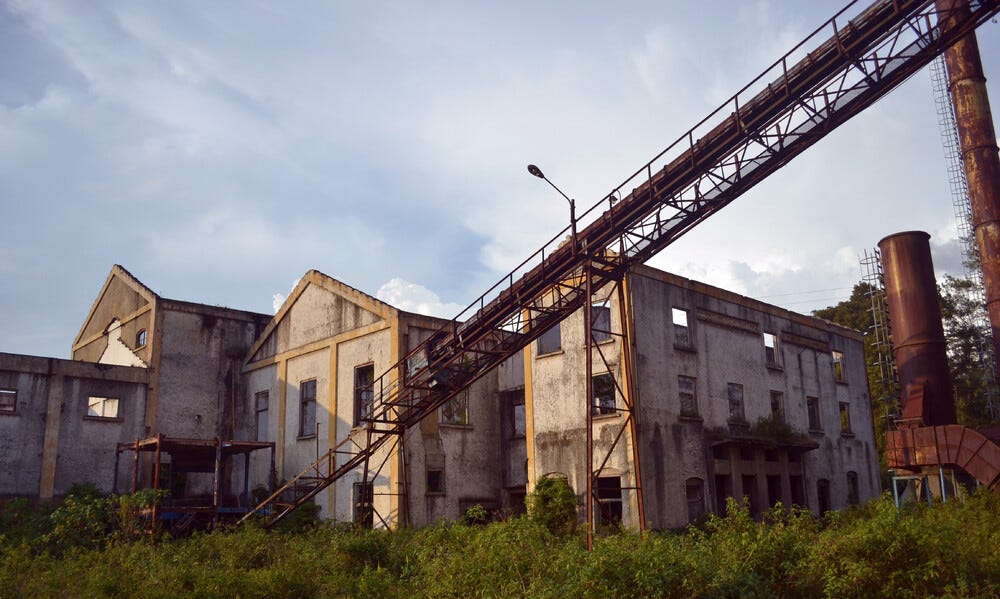Welcome to the NORTHERN HERITAGE Newsletter #4 and thank you for joining our journey of discovery into the heritage of Prince George and Northern BC.
Photo: Hanna Petersen
The Forest Industry may be dying, but it could thrive as Heritage
Industries inevitably rise and fade, like civilizations, as they adapt to modernity and globalization and environmental change. Not much we can do about that, you say, and maybe you’re right. However, there are three important concepts in Heritage that I want to bring to your attention: the first is Values, the second is Industrial Heritage and the third is Cultural Landscape.
These are important because when they work together they can save threatened heritage and give it revived life in new times!
Heritage Values
These are all the things about a heritage place, thing or practice that give it meaning and significance to the community; it could be its appearance, the materials used to build it, stories associated with it or good/bad memories inextricably linked to it
IMPORTANT POINT —- clearly Values are in peoples’ minds so there can be as many Values as there are people or groups within a community. So Values can be both unifying and divisive.
What are the Values you see in these heritage places and events? Could you imagine other people seeing something different, maybe even conflicting?
Industrial Heritage
The International Committee for the Conservation of the Industrial Heritage (TICCIH) defines industrial heritage as the physical remains of industrial and technological history. This includes sites, buildings, machinery, and landscapes and associated settlements of industry workers and associated activities
IMPORTANT POINTS —- firstly, Industrial Heritage is chronically under-valued and ignored, particularly at local levels; secondly, it is vanishing quickly, as we speak! and thirdly, it includes not just physical remains but also the many types of knowledge and skills held by individuals and communities who form or formed the industry
Think about how many remnants of the forestry industry remain throughout Prince George and the North, in the towns, the wilderness and in the memories and talents of our residents…. what makes them significant for you? What are their heritage Values?
Cultural Landscape
According to UNESCO a cultural landscape is a place where we can see “the combined works of nature and man”. They are the result of nature influencing and molding human activity and that activity, over time, altering and re-structuring the natural landscape.
IMPORTANT POINT —- we live and work in cultural landscapes, from our local neighbourhoods to the city environs , to the confluence of the rivers and the traditional cultural landscape of the Lheidli T’enneh. Some are more threatened than others and in different ways…
We move through layers of cultural landscapes every day and often they merge and mix forming new spaces for us to enjoy and creating new Values for us to protect
I think these concepts will make sense to anyone who lives in PG and the North and spends time working in, enjoying or battling the natural world around us!
Re-visioning and Repurposing the Industrial Past
If we combine these ideas and apply them to Prince George and its environs we have in our hands a very effective tool for envisioning Prince George as a Heritage Place, safeguarding and making the most of its heritage and conserving Heritage which will bring with it the range of benefits that I discussed in Newsletter #3.
It’s easier to identify what the values of Prince George heritage are NOT than what they might be — not great architectural significance or use of exotic, rare materials; not extreme antiquity (except for buried indigenous archaeological material which definitely has this); not neighbourhoods full of historic period buildings.
Prince George began life as a working town and that has been the story of its growth and prosperity, from a trading post to railway and mill town to the hub of the North. So this is where we need to look for the region’s heritage values — in the cultural landscapes created by millennia of living off the land and harvesting its resources, from fish to gold to lumber.
The Industrial Heritage Landscapes all around us
One of the most visible Industrial Heritage Landscapes is the area north of 1st Avenue along the south back of the Nechako River. It fulfils all the requirements of a cultural landscape: a clearly defined area incorporating heritage from multiple periods — from Lheidli T’enneh sites to rail and sawmill heritage from the early days of the city, to contemporary locations that commemorate and preserve the industrial past. It includes industrial machinery, structures, former workers residences and transport links.
The landscape has time depth reflecting the rich history at the confluence, and it is tied to the rivers reflecting the importance of connectivity to Prince George industry through time.
This map highlights some of the industrial heritage resources in the landscape, but I am sure that you readers, especially those with work and family ties to industries in the area, can add to it!
Making Industrial Landscapes work for the community
The Prince George Community Heritage Commission (please see Disclaimer below) has highlighted the Prince George Industrial Heritage Landscape for future inclusion on the Heritage Register - an official list of heritage to be flagged in the planning process and considered for formal protection. It would be the first item of industrial value and would be a big step in the Commission’s programme to expand the definition of “heritage” beyond historical buildings.
The values we see in industrial heritage are the values that make Prince George and the North special. Think beyond the lumber industry — Lheidli T’enneh trap lines and fish camps, historic and contemporary gold mining, pulp and paper, road and rail….. how many of them have created industrial landscapes with potential to add to the story of the North?
Photo: Citizen via City of Prince George
The first steps towards bringing the PG Industrial Heritage Landscape to life as a vibrant asset for the city and the region include:
bringing on board all the stakeholders including land owners, the City, industry representatives, residents and researchers
documenting the historical timeline of the landscape and the evolution of its many layers
The landscape of Prince George in the Spring of 1913 (Northern BC Archives)
Cultural Mapping of the area - to bring the diverse range of stakeholders together to identify the ways that local industrial heritage assets, stories, practices, relationships and memories constitute places as meaningful locations
coming up with an Industrial Heritage Landscape Plan to preserve the heritage and its values, create a community asset with broad appeal, and a tourism and educational resource to help brand Prince George as “Basecamp to the Industrial North”!
Something to think about
Here are some international examples of UNESCO World Heritage industrial landscapes to inspire you and get you thinking about what a powerful tool heritage can be!
Vermok Power Station, Norway, early 20th c.
Verla Groundwood and Board Mill, Finland, Late 19th - early 20th c.
Ombilon Coal Mining Heritage, Indonesia, late 19th- early 20th c.
Tomioka Silk Mill, Japan, late 19th -early 20th c.
Something to do
All of you who live outside Prince George and/or know the North so well —- send me a quick message telling me about other industrial heritage landscapes that we should be considering and that are at risk of disappearing into the forest or to land development. Company towns, mills and factories, machinery and equipment, dumps and land modifications….
Wise Words on Heritage
If anyone is going to be in Sweden this summer, the TICCIH Congress 2025 will be held in the mining town Kiruna in northernmost Sweden, August 25 – 30, 2025. The title of the congress is “Heritage in action: Legacies of industry in future making” and will focus on tensions and controversies surrounding industrial heritage and its relation to wider tensions in present day society. Themes will range from issues regarding sustainability, inclusion and colonialism to future generations, popular culture and AI.
Disclaimer: I am a Member of the Prince George Community Heritage Register but all opinions are mine alone unless clearly stated otherwise.















My family loves the Britannia Mine Museum -- we used to go on our visits to Canada as a matter of routine. I am sure those visits played a part in one child becoming a geologist!
Another industrial heritage example elsewhere: Britannia Mine Museum in Britannia Beach, BC.
Also, it's still operating but the visitor centre at WAC Bennett Dam has done a good job (IMHO) of including the dam's impact on Indigenous communities.